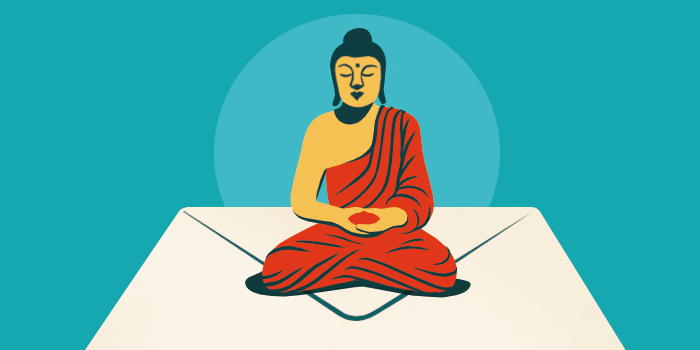What are the five hindrances?
The five hindrances are negative states of mind that are impediments to Buddhist practice. They are often most clearly seen, and arise as obstacles, in meditation. We are all quite familiar with them and may experience them every day.
The five hindrances are sensual desire, ill will, sloth, restlessness, and doubt.
Sensual desire means the appetites of the body for food, sex, possessions, experiences. All these wants can cloud the mind and make practice difficult, if not impossible. The Buddha, in one of his many metaphors for the hindrances, refers to sense desire as a dye that discolors a clear pool of water. The clear water that truly reflects the observer’s face represents the mind at ease.
Ill will refers to all the aversive and rejecting states of mind—anger, hostility, resentment, bitterness. The Buddha described the mind captured by ill will as water that is frothing, bubbling, and boiling.
Sloth, or indolence characterizes the mind that is slow and drowsy. A dull and sleepy mind cannot see things as they are. The Buddha likens it to a pool of water overgrown with moss and algae.
Restlessness captures many feelings common to life today: worry, fear, anxiety. The restless mind is disturbed and preoccupied, not ready to learn or grow. The Buddha compares the restless mind to a pool stirred by the wind into ripples and waves.
Doubt means the mind is crowded with questions and uncertainty: Am I doing the right thing? Am I wasting my time? The Buddha describes the doubt-filled mind as a pool of water that is murky, cloudy, or shadowed.
The five hindrances are traditionally viewed as obstacles or fetters that prevent us from seeing things as they are and from practicing with a clear mind. But we also must learn to live with them. They may not be the best roommates, but in this light we can view negative thoughts and feelings as incentives to practice.

Tricycle is more than a magazine
Gain access to the best in sprititual film, our growing collection of e-books, and monthly talks, plus our 25-year archive
Subscribe now